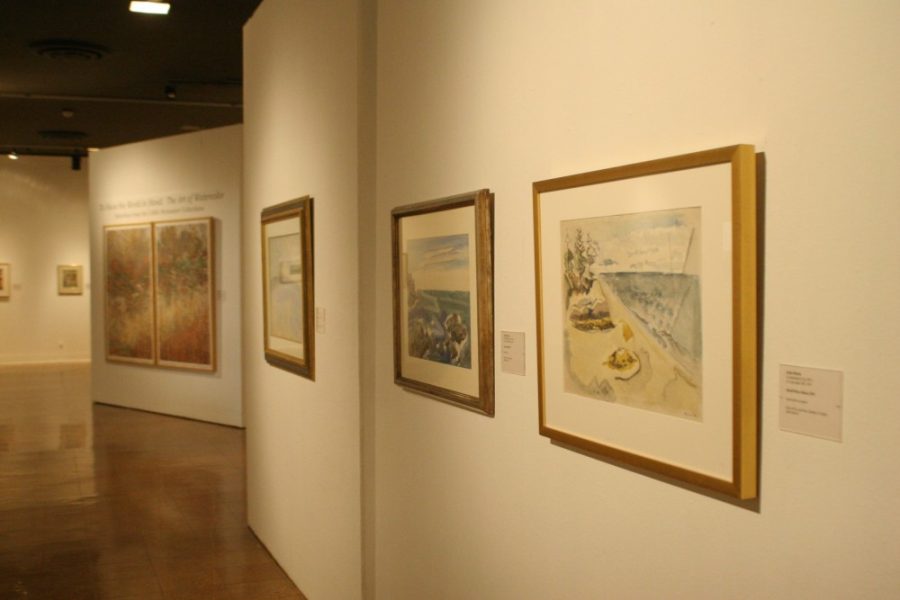A watercolor exhibit might not sound like the best way to spend an overheated Tucson afternoon. But a visit to the UA Museum of Art’s ongoing display of its impressive collection proves that watercolors can be far more diverse and evocative than your kindergarten teacher ever dreamed.
From the famous (Paul Klee, Andrew Wyeth) to the not-so-famous (Raoul Dufy), the two rooms of the exhibit offer a charming overview of the last two centuries of watercolor. They range from the simple to the breathtakingly complex.
The paintings don’t hold to any single pattern. Colors can pop unexpectedly in your face or lurk in a painting’s background like a distant, ominous thunderstorm. Some of the works are simple, with the fat, blunt lines of a child’s picture. Others are so complicated you can’t believe a human painted them. Interestingly, the smallest and oldest works tend to be the most startlingly detailed.
Samuel John Ireland’s “”The Politician”” is a witty, finished ink drawing filled in with gentle watercolors; Raoul Dufy’s “”The Piazzetta, Venice,”” dominated by a serene shade of blue, is strikingly simple and evocative.
Frederic Remington’s sketches of “”Mexican Doorways,”” dating from about 1890, have the dashed-off quality of great cartoons. So does George Grosz’s “”Waiting for a Job,”” which is filled with his usual grotesque caricatures drowning in the sensitive air of surrounding colors.
A couple of the works on display are miniature art lessons in themselves. Nathan Oliveira’s 1965 “”Portrait of a Girl”” could be retitled “”Portrait of Two Faces in One,”” since half the girl’s face is alive, alert and worried, while the other half is sunk in what looks like either terminal depression or peacefulness. It’s a rearranged Picasso face buried in shadow, and it reminds you just how much ol’ Pablo rewrote the rules of portrait painting. The picture is almost alarmingly weird, but it’s devised so that it looks utterly natural.
Chen Chi’s 1959 “”The Good Earth”” comes out of an entirely different tradition than the other paintings. Instead of imposing his sense of drama on his subject, the artist simply accumulates details — many of them identical — into a picture of a landscape that never changes. It stands at the precise opposite pole from Andrew Wyeth’s violently expressionistic “”Pioneer House,”” a harsh and resonant picture of a country pool.
The exhibit’s standout work is also its simplest: Lyonel Feininger’s 1945 “”Widespread.”” Working with almost nothing — a few severe pen lines and a splash or two of faded color — Feininger draws a beach scene more evocative and persuasive than the most detailed photograph.
You stare at the picture, construct an image in your mind, then look at the picture again — it’s at once a pure abstraction and a fully convincing landscape. It’s a wonderful lesson in what a great artist can accomplish with restraint and understatement — a lesson a lot of modern artists would do well to learn.









